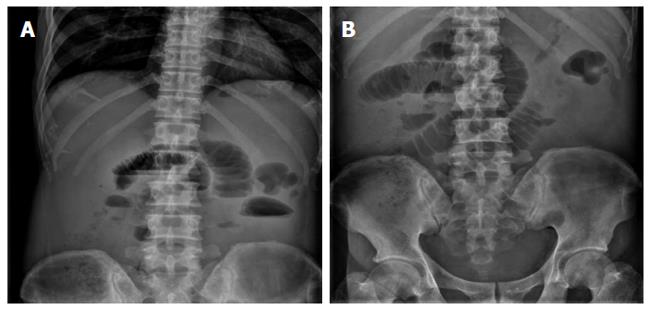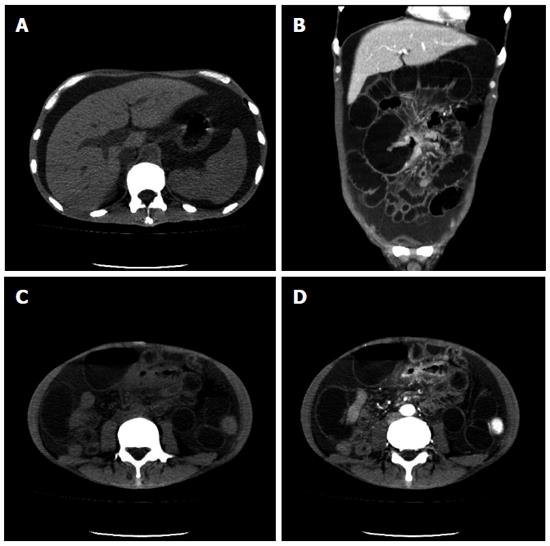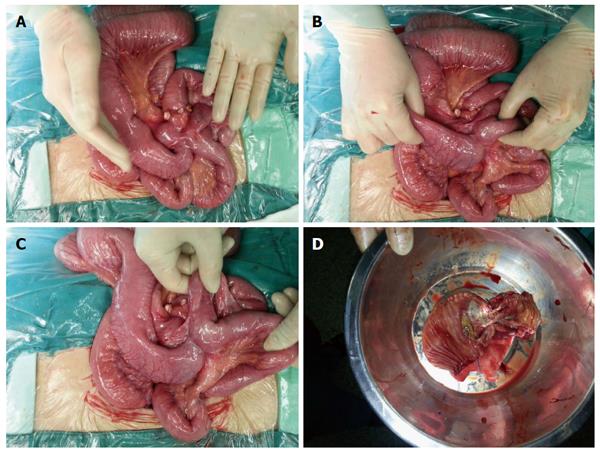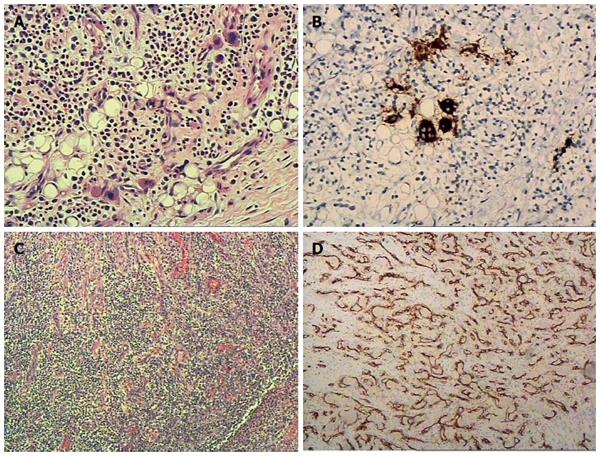Copyright
©2014 Baishideng Publishing Group Inc.
World J Gastroenterol. Sep 7, 2014; 20(33): 11921-11926
Published online Sep 7, 2014. doi: 10.3748/wjg.v20.i33.11921
Published online Sep 7, 2014. doi: 10.3748/wjg.v20.i33.11921
Figure 1 Plain abdominal radiography revealed incomplete small intestinal obstruction.
A: The flat film of the abdomen in the standing position showed dilated small bowel loops with air-fluid levels; B: The flat film of the abdomen in the horizontal position showed dilated small bowel.
Figure 2 Computerized tomography images indicated hepatosplenomegaly and ascites (A) and the presence of thickened intestinal wall with obvious enhancement in the arterial phase and dilated small bowel (B-D).
A: Plain computerized tomography (CT) scan; B: Coronal CT scan; C: Plain CT scan; D: The arterial phase.
Figure 3 Exploratory laparotomy revealed intestinal obstruction caused by an intestinal mass approximately 5 cm × 3 cm × 3 cm and intestinal adhesions.
A: The intestinal mass; B-C: Intestinal adhesions; D: The brownish-yellow mass with an ulcer.
Figure 4 Extramedullary hematopoietic mass of the small intestine with ulcer and excessive vascular proliferation was confirmed by histopathology.
A: A significant quantity of Megakaryocytes along with the accumulation of immature myeloid cells and erythroid cells were observed; B: Megakaryocytes were CD61 positive and CD68 negative (not shown); C: Significant hyperplasia of blood vessels and a large number of infiltrated inflammatory cells were seen; D: Blood vessels were confirmed by positive CD31 staining.
- Citation: Wei XQ, Zheng ZH, Jin Y, Tao J, Abassa KK, Wen ZF, Shao CK, Wei HB, Wu B. Intestinal obstruction caused by extramedullary hematopoiesis and ascites in primary myelofibrosis. World J Gastroenterol 2014; 20(33): 11921-11926
- URL: https://www.wjgnet.com/1007-9327/full/v20/i33/11921.htm
- DOI: https://dx.doi.org/10.3748/wjg.v20.i33.11921












